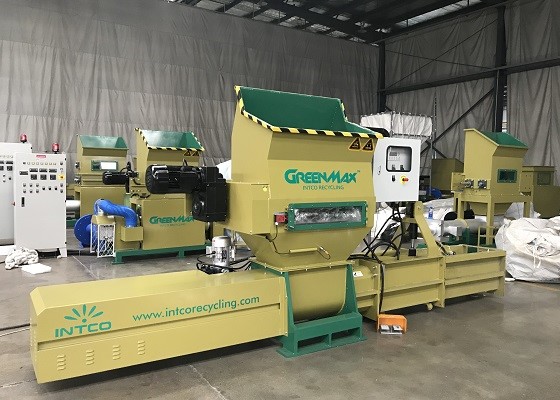It may be hard for you to imagine that the soft and expanded EPS foam can become a hard “wooden” photo frame, but this is a fact. It can indeed be compressed by an EPS foam compactor.
Not only photo frames but also stationery, clothes hangers, park benches, skirting lines, and other items. EPS foam compactor is an important part of EPS foam recycling. After you know that EPS foam trash can regain life after recycling, will you look at EPS foam trash again and regard it as a resource?
EPS foam contains 98% air content, which is the first problem to be solved in order to recycle it into a photo frame. EPS foam compactor is recycling equipment developed by GREENMAX to solve this problem. It mainly adopts the combination of crushing and hydraulic pressure.
After the EPS foam trail is put into the machine hopper, it is first crushed into foam by the rotary cutter in the process of natural falling, then falls into the cold pressing screw part, is pushed to the hydraulic plate by the screw, and finally produces a tight EPS foam block through timed hydraulic pressure. The volume ratio of EPS foam block with extruded air content to EPS foam trace is 50:1.
After becoming EPS foam blocks, they can be sold to the terminal market. GREENMAX is also purchasing back EPS foam blocks for the manufacture of photo frames. GREENMAX has more than ten years of rich experience in EPS foam recycling. It attaches the recycling experience to the EPS foam compactor. From how to recycle to selling recycled EPS foam, GREENMAX sells a complete recycling scheme to customers.
In 1991, Germany began to require the company to take responsibility for its own EPS foam packaging trash. At present, when EPS foam pollution is becoming more and more serious, self-processing EPS foam trash is becoming popular. It is also an option to recycle EPS foam waste into photo frames using an EPS foam compactor.
